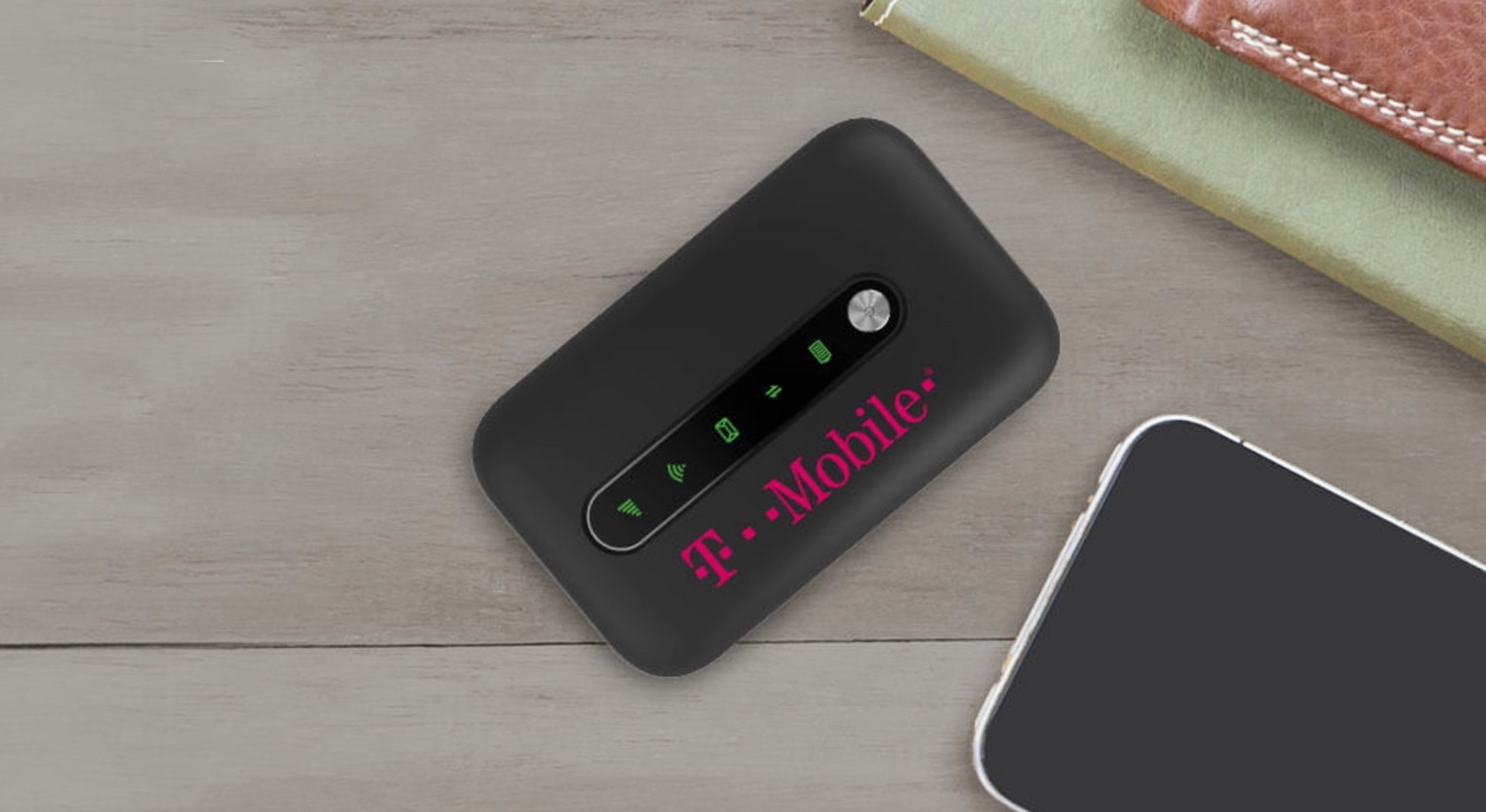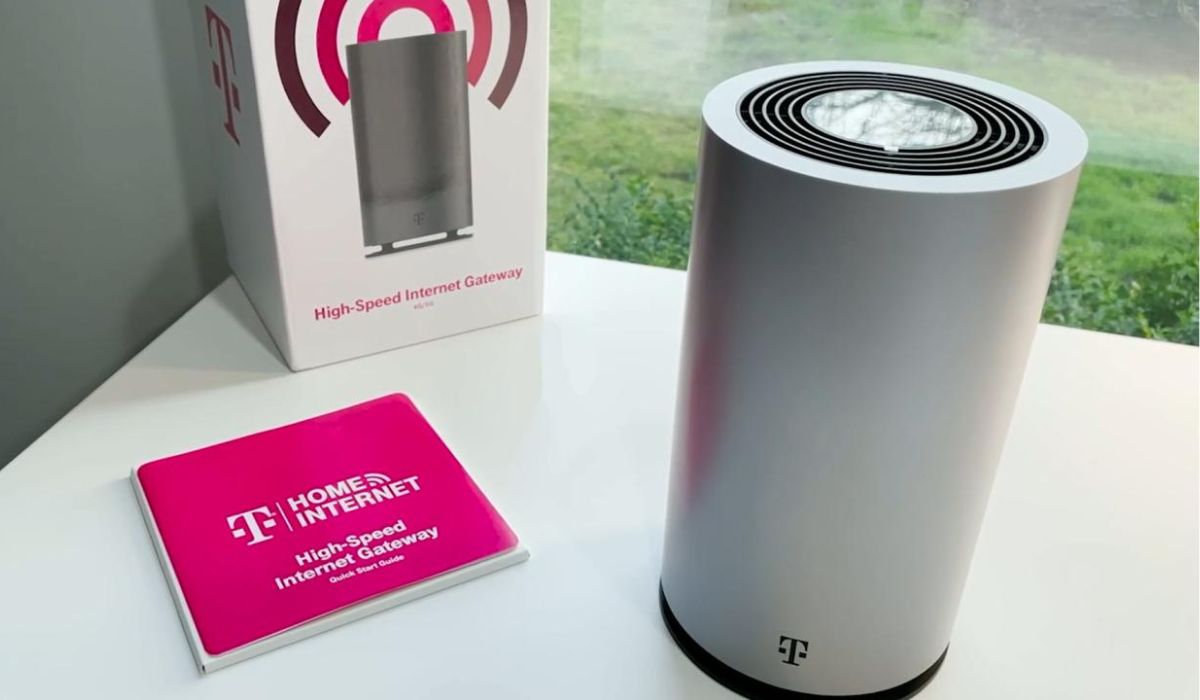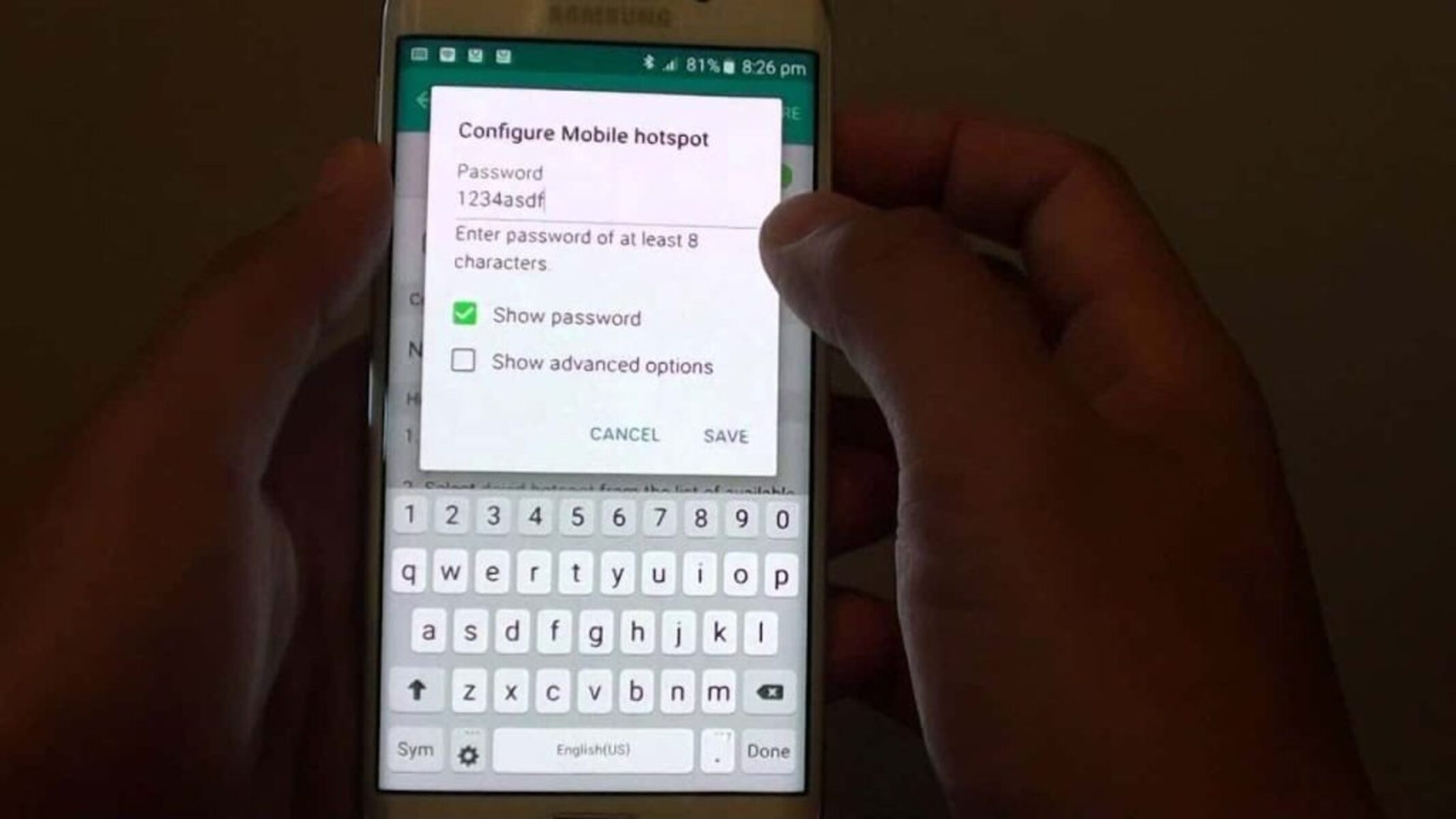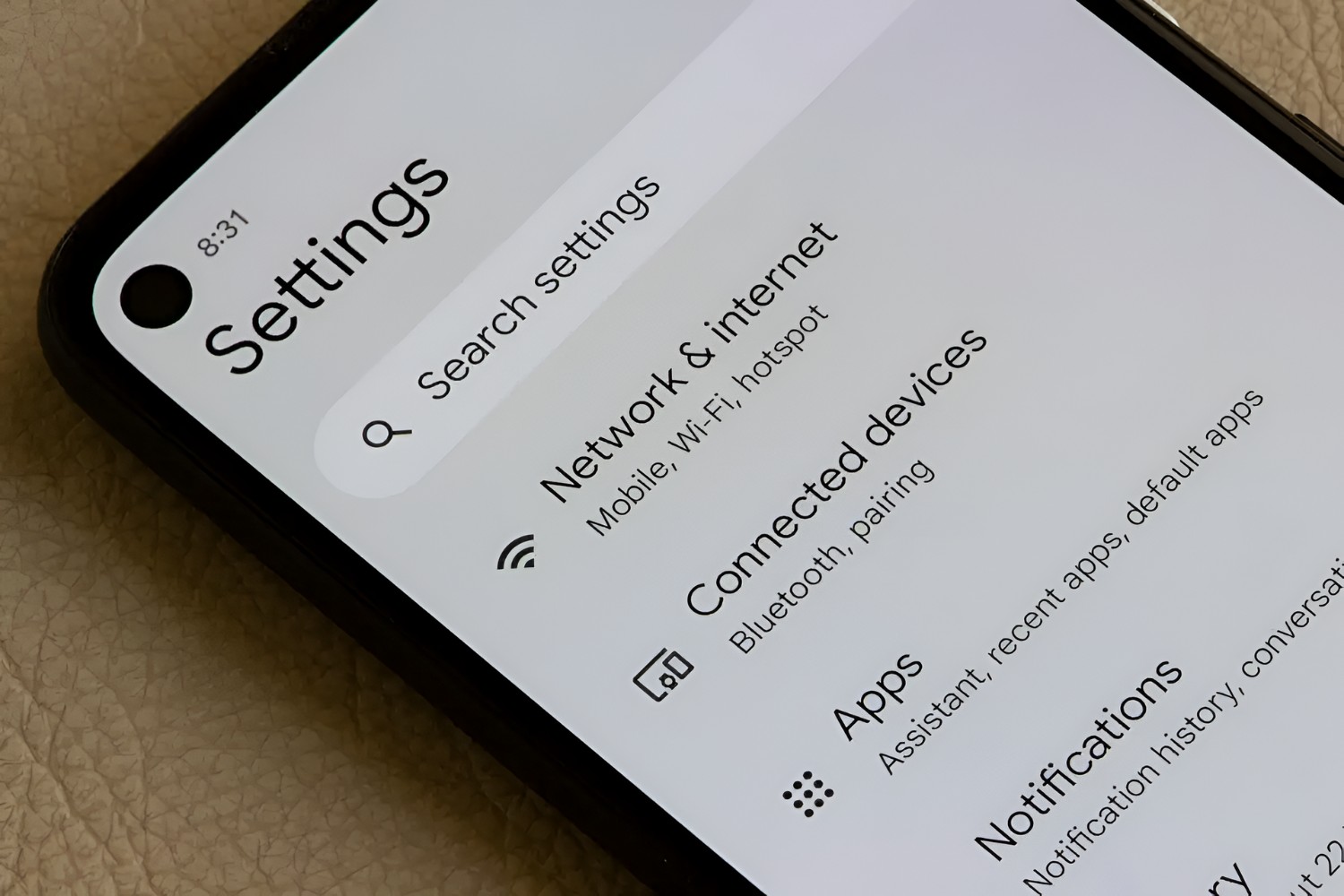Introduction
In today's fast-paced digital age, staying connected is more crucial than ever. Whether you're working remotely, streaming entertainment, or simply keeping in touch with loved ones, a reliable internet connection is a necessity. Mobile hotspots have become an indispensable tool for ensuring connectivity on the go, allowing users to create a Wi-Fi network using cellular data. However, one common challenge faced by mobile hotspot users is limited range, which can hinder the ability to access the internet from various locations.
The range of a mobile hotspot refers to the distance over which it can effectively provide a stable Wi-Fi connection. When the range is limited, users may experience dropped connections, slow speeds, or difficulty connecting from certain areas within a building or outdoor space. This limitation can be frustrating, especially when relying on a mobile hotspot for essential tasks or entertainment.
Fortunately, there are effective strategies for extending the range of a mobile hotspot, enabling users to enjoy a more expansive and reliable Wi-Fi coverage area. By implementing these strategies, individuals can optimize their mobile hotspot experience and overcome the constraints of limited range. From optimizing the placement of the hotspot device to utilizing advanced technologies such as signal boosters and Wi-Fi extenders, there are various approaches to enhance the range and performance of a mobile hotspot.
In this comprehensive guide, we will explore the factors that influence mobile hotspot range and delve into practical strategies for extending it. Whether you're a remote worker, a frequent traveler, or someone who relies on a mobile hotspot for internet access, this guide will provide valuable insights and actionable tips for maximizing the range and effectiveness of your mobile hotspot. By understanding the dynamics of mobile hotspot range and implementing the recommended strategies, you can elevate your connectivity experience and enjoy seamless Wi-Fi access across a broader area.
Understanding Mobile Hotspot Range
Mobile hotspot range refers to the distance within which the Wi-Fi signal emitted by a mobile hotspot device can effectively provide internet connectivity to connected devices. This range is influenced by various factors, including the technical specifications of the hotspot device, environmental conditions, and potential obstructions. Understanding the dynamics of mobile hotspot range is essential for optimizing its performance and addressing limitations related to coverage area.
The range of a mobile hotspot is primarily determined by the strength and propagation of its Wi-Fi signal. The signal strength diminishes as the distance from the hotspot increases, leading to a reduction in data transmission speed and stability. Additionally, environmental factors such as physical barriers, interference from other electronic devices, and geographical features can impact the range of a mobile hotspot. For example, thick walls, metal structures, and dense foliage can obstruct the Wi-Fi signal, limiting its reach.
Moreover, the specific technical specifications of the mobile hotspot device, including its antenna design, transmission power, and frequency bands supported, play a significant role in determining its range. Devices with higher transmission power and advanced antenna configurations are capable of providing a broader coverage area, while those with lower power may have more limited range.
It is important to note that the range of a mobile hotspot is not static and can vary based on the surrounding conditions and operational settings. By gaining a thorough understanding of the factors affecting mobile hotspot range, users can make informed decisions about optimizing their connectivity and implementing strategies to extend the range as needed.
In summary, mobile hotspot range is influenced by signal strength, environmental factors, and device specifications. By comprehending the intricacies of mobile hotspot range, users can proactively address coverage limitations and maximize the effectiveness of their mobile hotspot for seamless internet connectivity.
Strategies for Extending Mobile Hotspot Range
-
Positioning and Placement: Optimal placement of the mobile hotspot device is crucial for maximizing its range. Positioning the device at a central location within the coverage area can help ensure more uniform Wi-Fi signal distribution. Additionally, elevating the hotspot to a higher position, such as placing it on a shelf or mounting it on a wall, can enhance signal propagation and reach. By strategically positioning the device, users can mitigate signal obstructions and extend the range to cover a larger area.
-
Upgrading Antennas: Some mobile hotspot devices allow for the attachment of external antennas, which can significantly improve signal strength and range. Upgrading to high-gain antennas or directional antennas can enhance the device's ability to transmit and receive Wi-Fi signals over longer distances. These antennas are designed to focus the signal in specific directions, effectively extending the range in targeted areas. By investing in quality antennas and properly configuring their placement, users can extend the reach of their mobile hotspot and overcome coverage limitations.
-
Using Signal Boosters: Signal boosters, also known as cellular amplifiers or repeaters, are specialized devices designed to amplify and retransmit cellular signals, including those used for mobile hotspot connectivity. By placing a signal booster within the coverage area of the mobile hotspot, users can amplify the Wi-Fi signal, effectively extending its range and improving signal strength. Signal boosters are particularly useful in environments with weak cellular signals, as they can enhance the overall coverage and ensure a more robust connection for connected devices.
-
Utilizing Wi-Fi Extenders: Wi-Fi extenders, also referred to as repeaters or range extenders, are devices that can amplify and rebroadcast Wi-Fi signals, effectively expanding the coverage area of a wireless network. By strategically placing Wi-Fi extenders within the range of the mobile hotspot, users can create additional Wi-Fi coverage zones, allowing for seamless connectivity in areas that were previously outside the primary range. Wi-Fi extenders are valuable tools for extending the reach of a mobile hotspot and ensuring consistent connectivity throughout a larger area.
-
Adjusting Settings and Frequencies: Some mobile hotspot devices offer advanced settings that allow users to adjust transmission power, channel bandwidth, and frequency bands. By fine-tuning these settings, users can optimize the performance of the hotspot and extend its range. For example, selecting the optimal Wi-Fi channel and adjusting transmission power based on the specific environment can enhance signal coverage and reach. Additionally, leveraging different frequency bands, such as 5 GHz for shorter ranges and 2.4 GHz for broader coverage, can further extend the reach of the mobile hotspot.
By implementing these strategies, users can effectively extend the range of their mobile hotspots, ensuring broader coverage and improved connectivity for connected devices. Whether working from a remote location, traveling, or simply seeking to enhance Wi-Fi access, these strategies offer practical solutions for overcoming the limitations of mobile hotspot range.
Positioning and Placement
Optimal positioning and placement of a mobile hotspot device are fundamental in maximizing its range and ensuring consistent Wi-Fi coverage across a desired area. The strategic placement of the device plays a pivotal role in mitigating signal obstructions and enhancing signal propagation, ultimately extending the reach of the Wi-Fi network.
When considering the positioning of a mobile hotspot, it is essential to place the device at a central location within the intended coverage area. By doing so, the Wi-Fi signal can be evenly distributed, minimizing potential dead zones and ensuring reliable connectivity throughout the space. Furthermore, positioning the device at a central point helps to optimize signal propagation in all directions, effectively extending the coverage area.
Elevating the mobile hotspot to a higher position can also contribute to extending its range. Placing the device on a shelf, mounting it on a wall, or utilizing a stand to raise it above ground level can enhance signal propagation and reach. By elevating the hotspot, the Wi-Fi signal can more effectively traverse through the intended coverage area, overcoming potential barriers and extending coverage to a broader space.
Moreover, when positioning the mobile hotspot, it is important to consider potential signal obstructions and interference. Avoiding placement near large metal objects, dense walls, or electronic devices that may cause interference can help optimize the Wi-Fi signal's reach. Additionally, assessing the surrounding environment for potential signal-blocking elements and adjusting the device's position accordingly can contribute to extending the range of the mobile hotspot.
In outdoor settings, such as open spaces or outdoor events, positioning the mobile hotspot at an elevated location can significantly enhance its range. Utilizing a weatherproof enclosure or protective casing, if necessary, allows for the safe and elevated placement of the device, ensuring extended Wi-Fi coverage for outdoor activities and events.
In summary, strategic positioning and placement of the mobile hotspot device are crucial for extending its range and optimizing Wi-Fi coverage. By placing the device at a central location, elevating it to enhance signal propagation, and considering potential obstructions, users can effectively extend the range of their mobile hotspot, ensuring seamless connectivity across a broader area.
Upgrading Antennas
Upgrading antennas presents a powerful strategy for extending the range and enhancing the performance of a mobile hotspot. Many mobile hotspot devices are equipped with external antenna ports, allowing users to leverage the benefits of high-gain antennas and directional antennas to optimize signal transmission and reception.
High-gain antennas, also known as high-performance antennas, are designed to amplify the Wi-Fi signal, thereby extending the range of the mobile hotspot. These antennas are characterized by their enhanced signal sensitivity and the ability to transmit and receive signals over longer distances. By replacing the standard antennas with high-gain alternatives, users can experience a significant improvement in signal strength and coverage area. High-gain antennas are particularly effective in scenarios where the mobile hotspot needs to provide connectivity across expansive indoor or outdoor spaces, such as large homes, outdoor events, or remote work locations.
Directional antennas, another valuable option for antenna upgrades, offer the advantage of focusing the Wi-Fi signal in specific directions. Unlike omnidirectional antennas, which emit signals in all directions, directional antennas concentrate the signal in a targeted path, effectively extending the range in a specific direction. This capability is beneficial for scenarios where users require Wi-Fi coverage in specific areas or need to overcome signal obstacles. By strategically positioning directional antennas, users can tailor the Wi-Fi coverage to meet their specific connectivity needs, ensuring reliable and extended range in the desired direction.
When considering antenna upgrades for a mobile hotspot, it is essential to select antennas that are compatible with the device and align with the user's coverage requirements. Additionally, proper installation and orientation of the upgraded antennas are crucial for maximizing their effectiveness. By aligning the antennas for optimal signal transmission and reception, users can harness the full potential of antenna upgrades to extend the range of their mobile hotspot and achieve seamless connectivity across a broader area.
In summary, upgrading antennas presents a compelling strategy for extending the range of a mobile hotspot. Whether through the use of high-gain antennas to amplify signal strength or directional antennas to focus the signal in specific directions, antenna upgrades offer a versatile and effective approach to enhancing the performance and coverage area of a mobile hotspot. By leveraging the benefits of antenna upgrades, users can overcome coverage limitations and ensure reliable Wi-Fi connectivity across diverse environments and usage scenarios.
Using Signal Boosters
Signal boosters, also known as cellular amplifiers or repeaters, are specialized devices designed to enhance cellular signals, including those used for mobile hotspot connectivity. These devices play a crucial role in extending the range of a mobile hotspot and improving signal strength, particularly in environments where the cellular signal may be weak or inconsistent.
The functionality of signal boosters revolves around their ability to amplify and retransmit cellular signals, effectively extending the coverage area of the mobile hotspot. By capturing the existing cellular signal, amplifying it to a higher power level, and rebroadcasting it within the coverage area, signal boosters provide a reliable solution for overcoming connectivity challenges related to limited range and weak signal strength.
When integrating a signal booster with a mobile hotspot, users can experience significant improvements in Wi-Fi coverage and connectivity. Signal boosters are particularly valuable in scenarios where the mobile hotspot's range is restricted due to factors such as distance from cellular towers, building materials that obstruct signals, or geographical features that impede signal propagation.
The deployment of signal boosters is a strategic approach to ensuring consistent and robust Wi-Fi connectivity across a broader area. By placing a signal booster within the coverage area of the mobile hotspot, users can effectively amplify the Wi-Fi signal, extending its range and enhancing signal strength. This enables seamless connectivity for connected devices, regardless of their proximity to the mobile hotspot device.
Signal boosters are versatile solutions that cater to diverse environments, including residential settings, commercial spaces, outdoor venues, and remote work locations. They offer a reliable means of extending the range of a mobile hotspot, enabling users to overcome coverage limitations and ensure uninterrupted connectivity for essential tasks, communication, and entertainment.
In summary, signal boosters serve as indispensable tools for extending the range and improving the performance of a mobile hotspot. By amplifying and rebroadcasting cellular signals, these devices enhance Wi-Fi coverage and signal strength, providing users with an effective solution for addressing limitations related to range and signal quality. The integration of signal boosters with mobile hotspots offers a practical and reliable approach to achieving extended Wi-Fi coverage and seamless connectivity across diverse usage scenarios and environments.
Utilizing Wi-Fi Extenders
Wi-Fi extenders, also known as repeaters or range extenders, are invaluable devices that play a pivotal role in extending the range and coverage area of a wireless network, including that of a mobile hotspot. These devices are designed to amplify and rebroadcast existing Wi-Fi signals, effectively expanding the coverage area and ensuring seamless connectivity in areas that were previously outside the primary range.
The utilization of Wi-Fi extenders presents a practical and versatile strategy for extending the range of a mobile hotspot. By strategically placing Wi-Fi extenders within the range of the mobile hotspot, users can create additional Wi-Fi coverage zones, effectively overcoming limitations related to signal reach and obstructions. This allows for consistent and reliable connectivity in areas that may have experienced weak or intermittent Wi-Fi signals.
The functionality of Wi-Fi extenders revolves around their ability to capture the existing Wi-Fi signal from the primary router or hotspot device, amplify it, and rebroadcast it to create an extended coverage area. This process enhances the reach of the Wi-Fi network, ensuring that connected devices can seamlessly transition between the primary signal and the extended coverage provided by the Wi-Fi extender.
When deploying Wi-Fi extenders in conjunction with a mobile hotspot, users can experience significant improvements in Wi-Fi coverage and connectivity. These devices are particularly beneficial in environments where the primary Wi-Fi signal may be attenuated due to distance, physical barriers, or interference. By strategically positioning Wi-Fi extenders in areas with weaker signal reception, users can effectively extend the range of the mobile hotspot, ensuring consistent connectivity throughout the intended coverage area.
Moreover, Wi-Fi extenders are valuable tools for addressing coverage limitations in diverse settings, including homes, offices, outdoor spaces, and commercial environments. Their versatility and ease of deployment make them an accessible solution for individuals seeking to extend the range of their mobile hotspots and ensure reliable Wi-Fi connectivity across various usage scenarios.
In summary, the utilization of Wi-Fi extenders presents an effective and practical approach to extending the range and coverage area of a mobile hotspot. By leveraging the capabilities of Wi-Fi extenders, users can overcome limitations related to signal reach and obstructions, ensuring seamless connectivity for connected devices across a broader area. The integration of Wi-Fi extenders with mobile hotspots offers a versatile solution for optimizing Wi-Fi coverage and enhancing the connectivity experience in diverse environments and usage scenarios.
Adjusting Settings and Frequencies
Adjusting the settings and frequencies of a mobile hotspot device presents a versatile and effective strategy for extending its range and optimizing Wi-Fi coverage. Many modern mobile hotspot devices offer advanced settings that allow users to fine-tune various parameters, including transmission power, channel bandwidth, and frequency bands. By leveraging these settings, users can customize the behavior of the hotspot device to suit specific environmental conditions and coverage requirements, ultimately extending its range and improving connectivity.
One crucial aspect of adjusting settings involves optimizing the transmission power of the mobile hotspot. By adjusting the transmission power settings, users can control the strength of the Wi-Fi signal emitted by the device. In scenarios where extended range is a priority, increasing the transmission power can enhance the signal propagation, thereby extending the coverage area of the Wi-Fi network. However, it is essential to strike a balance, as excessively high transmission power levels can lead to interference and inefficiencies.
Furthermore, selecting the optimal Wi-Fi channel and adjusting channel bandwidth based on the specific environment can significantly impact the range and performance of the mobile hotspot. Wi-Fi channels represent different frequencies within the 2.4 GHz and 5 GHz bands, and selecting the least congested channel can minimize interference and enhance signal reach. Additionally, adjusting the channel bandwidth to match the usage requirements and environmental conditions can further optimize the Wi-Fi coverage area.
Another noteworthy consideration is the utilization of different frequency bands to extend the range of the mobile hotspot. Dual-band hotspot devices support both 2.4 GHz and 5 GHz frequency bands, each with distinct characteristics. The 2.4 GHz band offers broader coverage but may be susceptible to more interference, while the 5 GHz band provides faster speeds over shorter distances. By strategically leveraging these frequency bands based on the coverage requirements, users can tailor the Wi-Fi coverage to suit diverse usage scenarios and extend the range of the mobile hotspot as needed.
In summary, adjusting the settings and frequencies of a mobile hotspot device offers a versatile approach to extending its range and optimizing Wi-Fi coverage. By fine-tuning transmission power, selecting optimal Wi-Fi channels, adjusting channel bandwidth, and leveraging different frequency bands, users can effectively customize the behavior of the hotspot device to ensure seamless connectivity across a broader area. These adjustments empower users to overcome coverage limitations and enhance the performance of their mobile hotspots in diverse environments and usage scenarios.
Conclusion
In conclusion, the range of a mobile hotspot plays a pivotal role in determining the effectiveness of Wi-Fi connectivity across diverse environments and usage scenarios. The strategies discussed in this comprehensive guide offer valuable insights and actionable approaches for extending the range of a mobile hotspot, ensuring broader coverage and improved connectivity for connected devices.
By strategically positioning and placing the mobile hotspot device, users can optimize signal propagation and mitigate potential obstructions, ultimately extending the reach of the Wi-Fi network. Elevating the device to a higher position and considering potential signal-blocking elements are essential aspects of effective positioning.
The utilization of high-gain antennas and directional antennas presents a compelling strategy for enhancing the performance and range of a mobile hotspot. Upgrading to these advanced antennas enables users to amplify signal strength and extend coverage in targeted areas, catering to diverse connectivity requirements.
Furthermore, the integration of signal boosters and Wi-Fi extenders offers practical solutions for extending the range of a mobile hotspot, ensuring consistent and reliable connectivity across a broader area. Signal boosters amplify cellular signals, while Wi-Fi extenders expand the coverage area, addressing limitations related to signal reach and obstructions.
Adjusting settings and frequencies, including transmission power, Wi-Fi channels, channel bandwidth, and frequency bands, empowers users to customize the behavior of the mobile hotspot device, optimizing its range and coverage area based on specific environmental conditions and usage requirements.
By implementing these strategies, individuals can overcome the constraints of limited range and ensure seamless Wi-Fi connectivity in diverse settings, including homes, offices, outdoor venues, and remote work locations. Whether working remotely, traveling, or simply seeking to enhance Wi-Fi access, these strategies offer practical solutions for extending the range and performance of a mobile hotspot.
Ultimately, by understanding the dynamics of mobile hotspot range and implementing the recommended strategies, users can elevate their connectivity experience and enjoy seamless Wi-Fi access across a broader area. These strategies not only enhance the range of a mobile hotspot but also contribute to optimizing its performance and addressing the evolving connectivity needs of users in today's digital landscape.

























